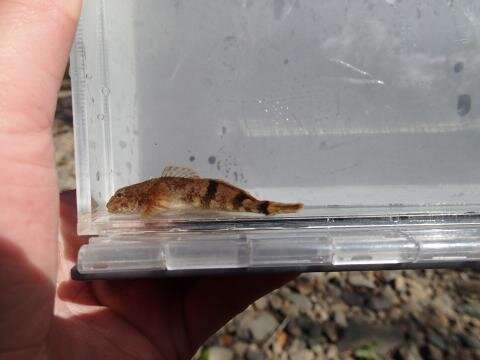This article has been reviewed according to Science X's editorial process and policies. Editors have highlighted the following attributes while ensuring the content's credibility:
fact-checked
peer-reviewed publication
trusted source
proofread
Revealing the secrets of freshwater streams

Beneath the surface of a freshwater stream, animals, plants, fungi, and microorganisms create complex patterns of biodiversity. Brooke Penaluna, research fisheries biologist at the USDA Forest Service Pacific Northwest Research Station, studies these dynamics, which can be complicated.
"Understanding the biodiversity of freshwater ecosystems and how different species are distributed along a stream network is challenging. Streams are interconnected and have a lot of rare and hard-to-detect species," said Penaluna, lead author of a study recently published in the Journal of Biogeography.
Big data, big discoveries
Penaluna and her research team studied four headwater watersheds of the Trask River in coastal Oregon. Their study relied on analysis of environmental DNA (eDNA), which are traces of genetic material shed by living organisms into the stream. From their water samples, the scientists extracted minute bits of DNA and sent them to a lab to be sequenced, providing a genetic signature. Their samples contained over 2 million sequences or "reads," which then had to be compared to known genetic databases to determine the identity of species.
"This is the definition of big data," said Penaluna. "It exceeds all Excel spreadsheets."
The team's results detected a shift in the pattern of stream biodiversity from the lower reaches toward the headwaters where fish dropped out at an upstream threshold. They also detected salmonids (Pacific salmon and coastal cutthroat trout) farther upstream than expected, suggesting a distribution extension.
Sculpins steal the scene
Sculpins are the rockstars of this study, and not only because of their spiky looks. "Our sculpin findings are showing us that things are not where we thought they were. We are identifying new lineages of sculpins using their genetic signatures," said Penaluna. These findings reveal the power of eDNA in showing aspects of biodiversity that had been "hidden" to us.
In addition to discovering possibly new species of sculpin, the analysis also detected a potentially harmful amphibian pathogen called Batrachochytrium dendrobatidis as well as the presence of the elusive mountain beaver.
This study transformed understanding of species presence across watersheds and by extension, enhanced our ability to track, protect, and manage them. It also revealed how much we didn't know and how much more there is to learn.
More information: Brooke E. Penaluna et al, Uncovering the hidden biodiversity of streams at the upper distribution limit of fish, Journal of Biogeography (2023). DOI: 10.1111/jbi.14605
Journal information: Journal of Biogeography
Provided by USDA Forest Service

















